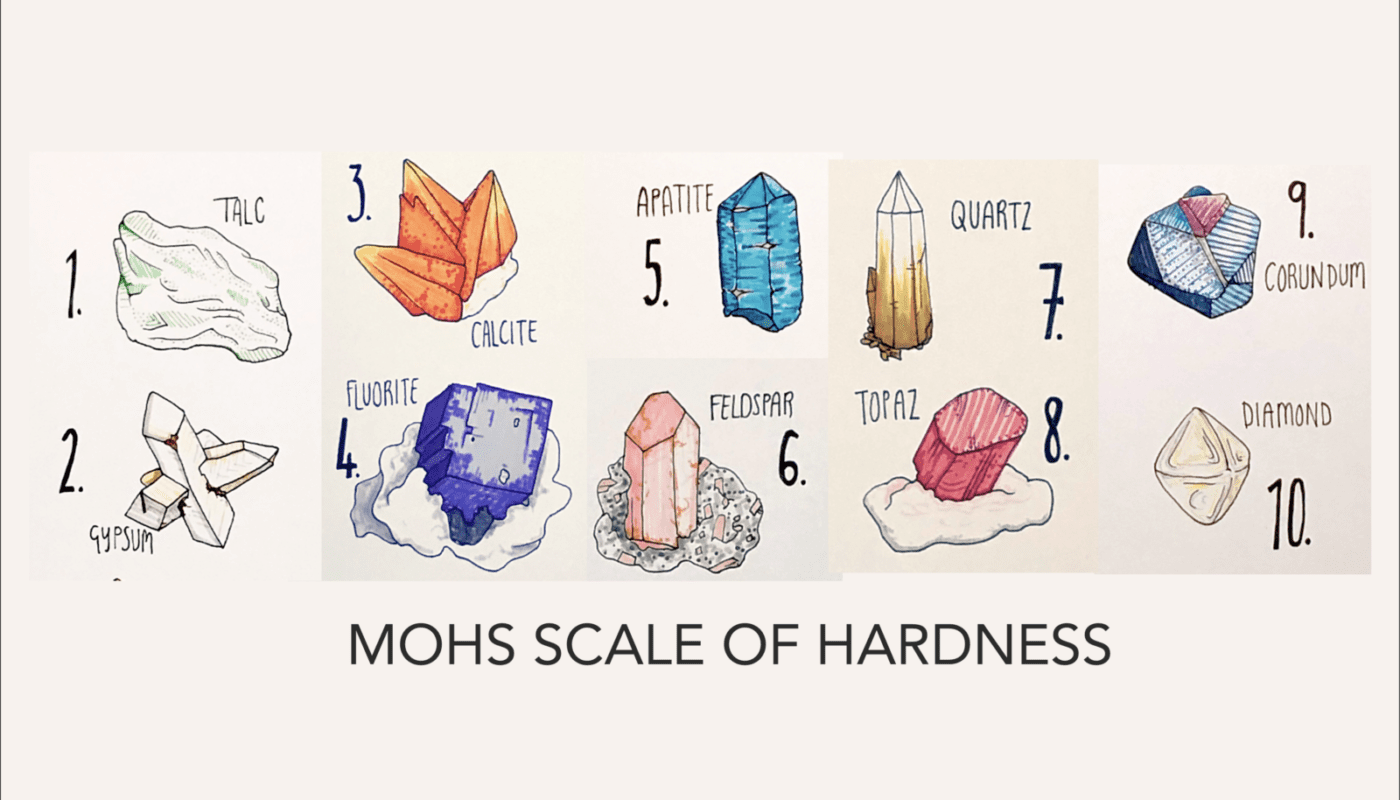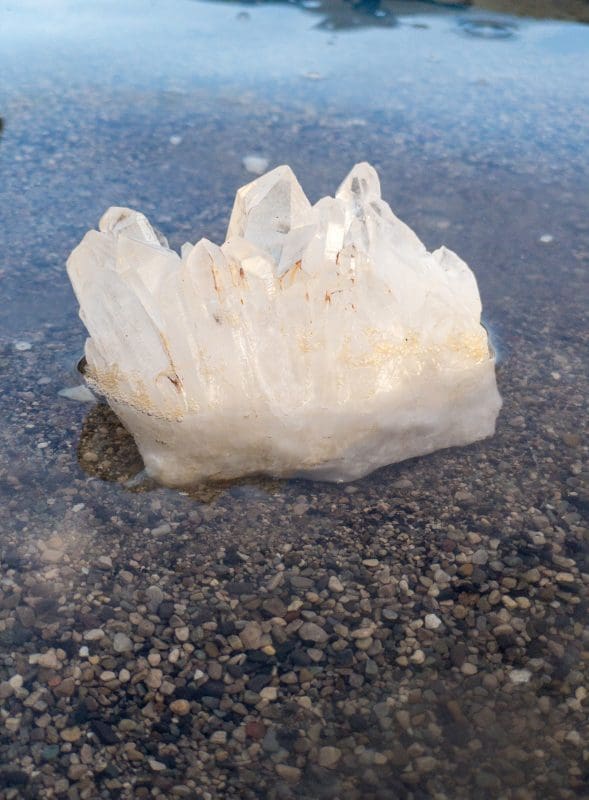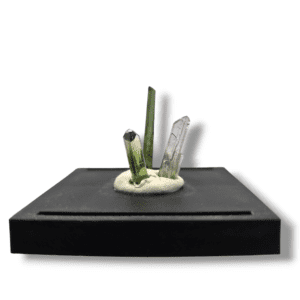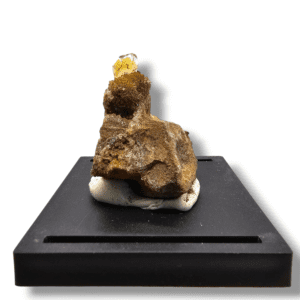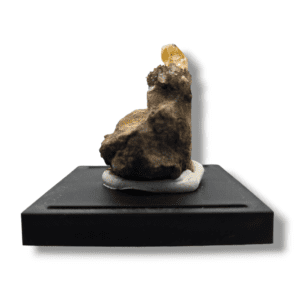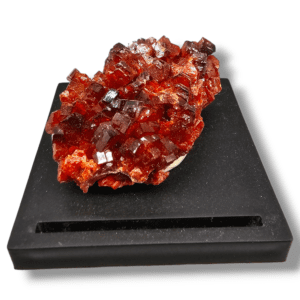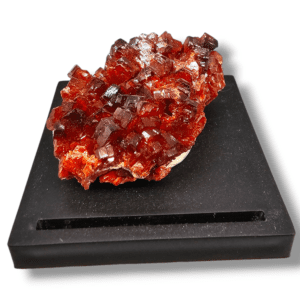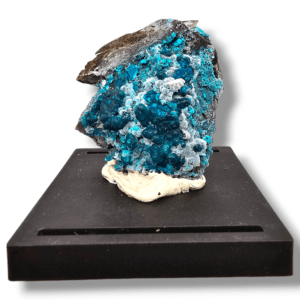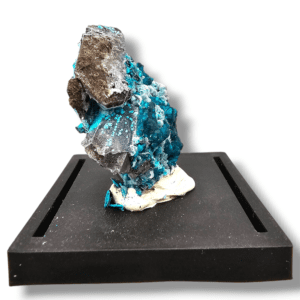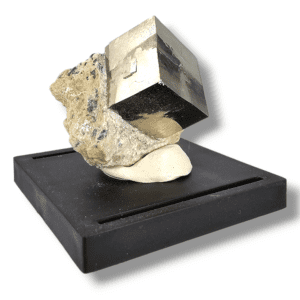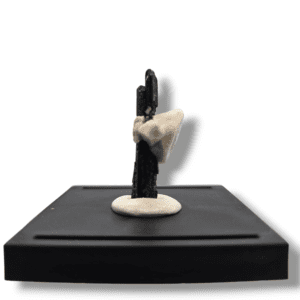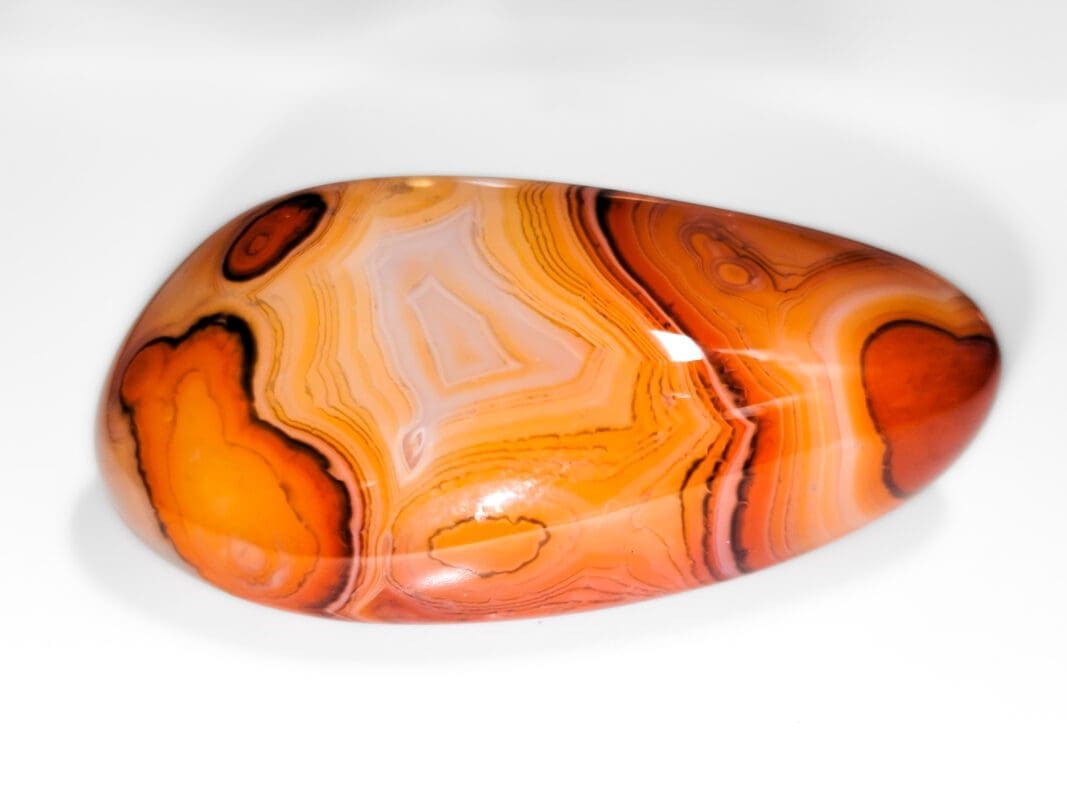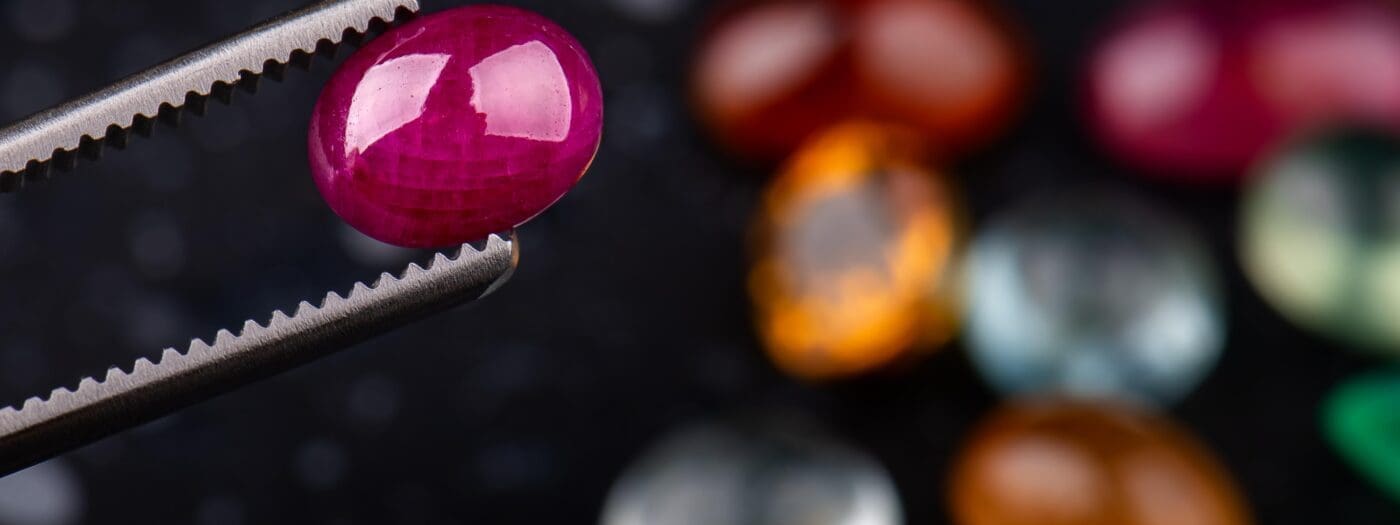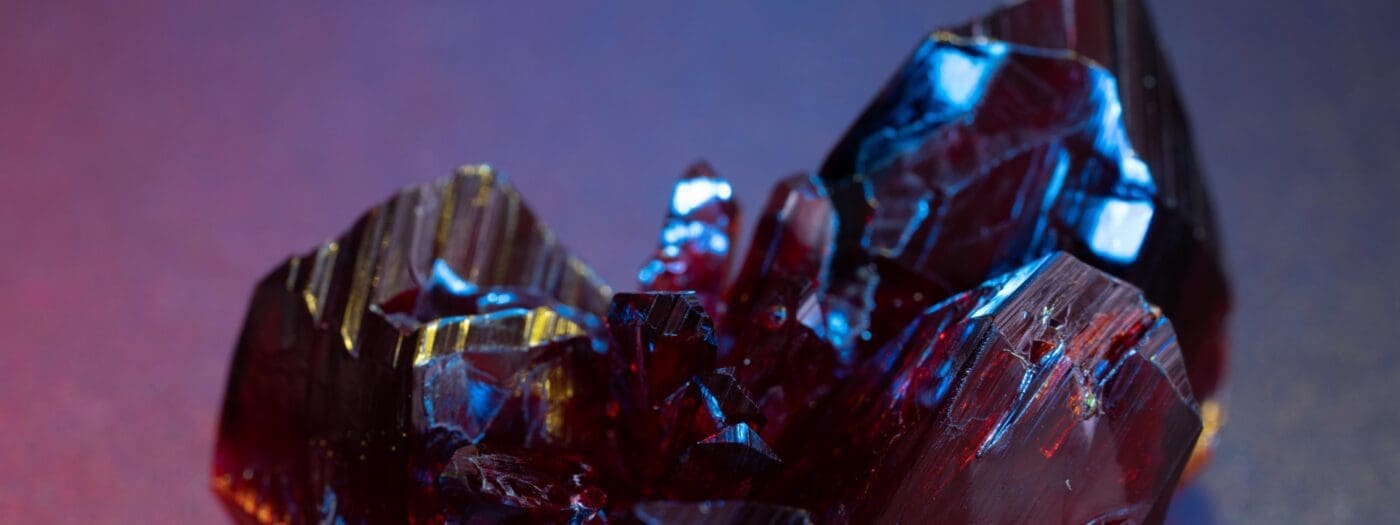Every crystal have various degree of hardness which has been measured by The Mohs Scale. Devised by Friedrich Mohs, an Austrian professor of mineralogy, it has been used to measure hardness for over two centuries. The Mohs scale classifies crystals from the softest (1) to the hardest (10). Below are some examples:
Hardness 1
- Very soft, can be scratched or fall apart with fingernail. – Talc
Hardness 2
- Easily scratched with fingernail. – Gypsum
Hardness 3
- Can be scratched with a coin (copper penny). – Calcite
Hardness 4
- Can be carved/scratched with a knife. – Fluorite
Hardness 5
- Can be carved with a knife with difficulty; can be scratched by glass.- Apatite
Hardness 6
- Can be carved/scratched with glass. Cannot be scratched by a knife. – Orthoclase
Hardness 7
- Can scratch glass easily. – Quartz
Hardness 8
- Can scratch glass very easily. – Topaz
Hardness 9
- Can scratch/cut Topaz and glass, and can be scratched by a diamond. – Corundum (Sapphire and Ruby)
Hardness 10
- No other minerals will scratch it, but can scratch all other minerals. – Diamond

